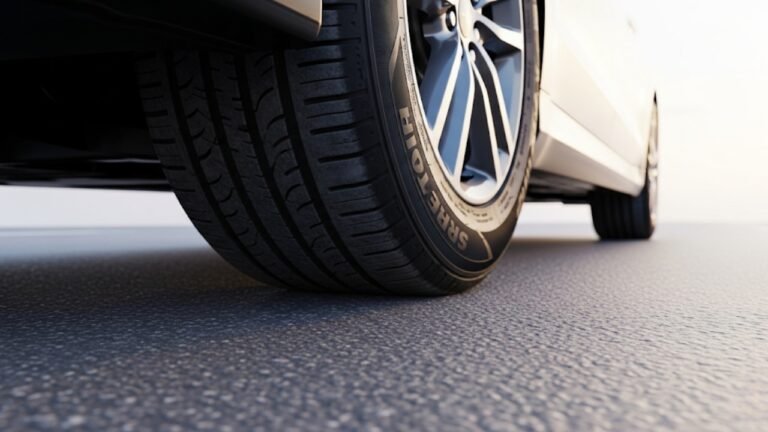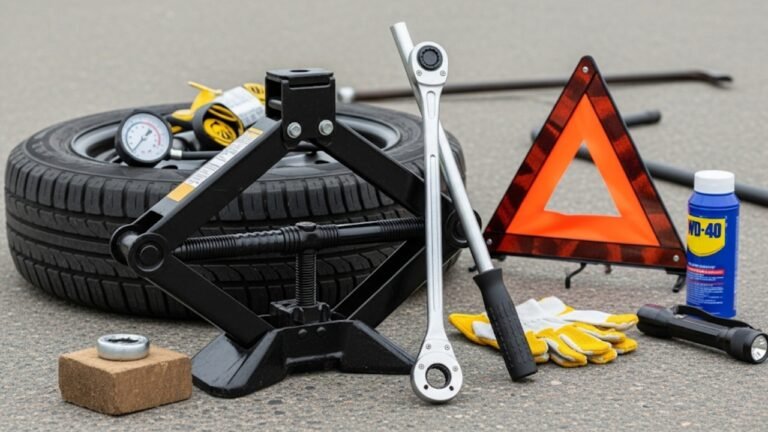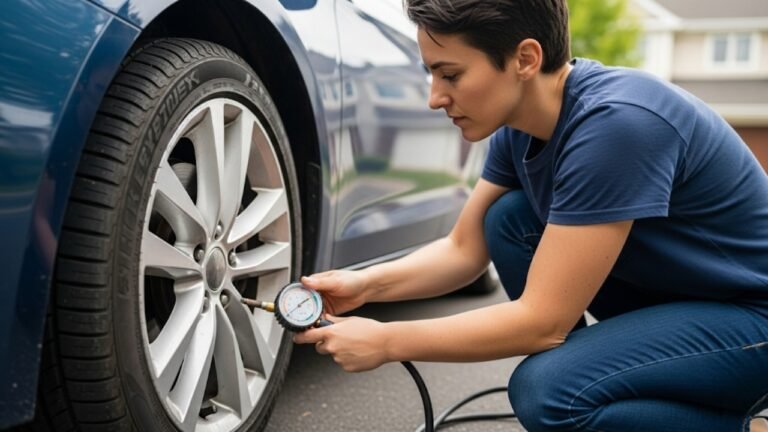How to Stop a Tire from Leaking Air
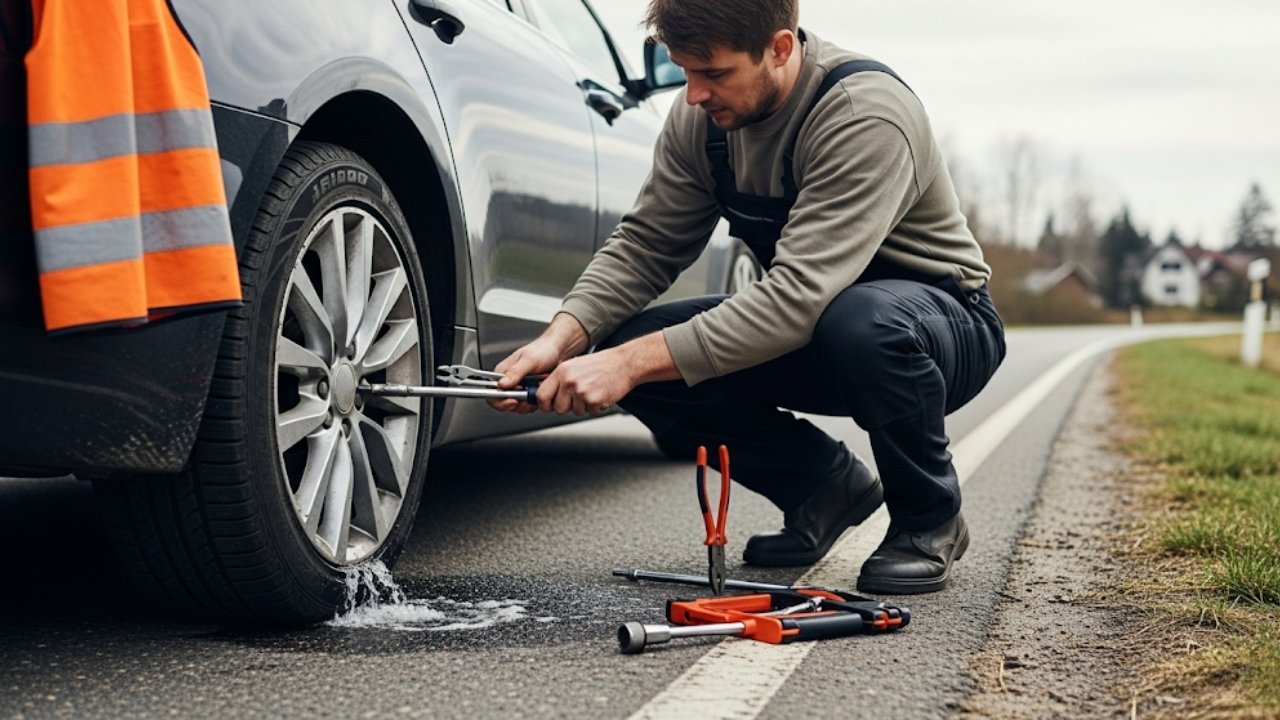
Ever felt that sudden ugh when you walk up to your car and see one tire looking a bit low? It’s like your day starts deflated—just like your tire. We’ve all been there. Whether it’s a slow leak, a sudden drop, or just a mysterious loss of pressure, dealing with a leaking tire is frustrating. But here’s the good news: you don’t need to be a mechanic to handle it. Knowing how to stop a tire from leaking air can save you money, time, and a whole lot of stress.
This guide will walk you through the entire process. From spotting the cause to fixing it yourself, you’ll learn what works, what doesn’t, and when to call in backup. We’ll keep things super easy to follow, even if you’ve never fixed a thing in your life. Plus, we’ll share some real-life tips that come from experience, not just Google.
Why Tires Leak Air in the First Place
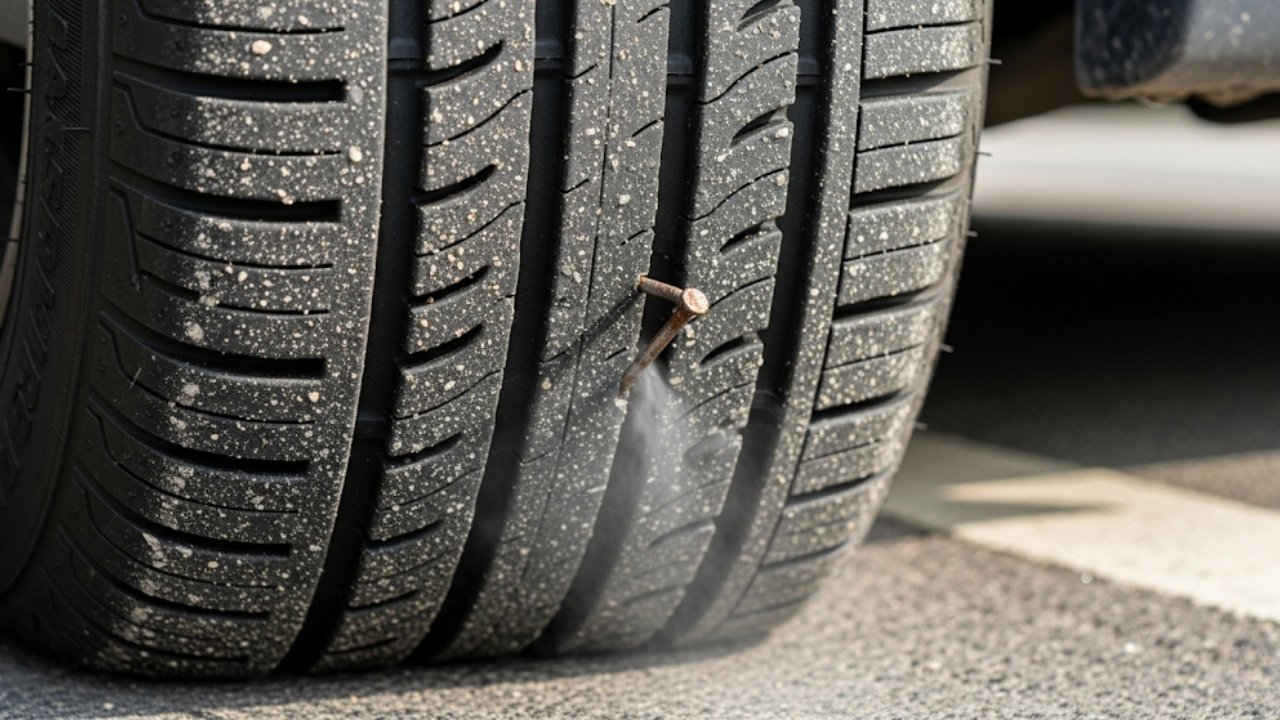
Here are the most common reasons:
-
Puncture by sharp objects like nails or glass
-
Valve stem issues — either cracked or loose
-
Rim damage or corrosion
-
Bead leaks — the edge where the tire meets the rim
-
Temperature changes causing natural air loss
-
Old tires that are simply worn out
In fact, most slow leaks are invisible at first. You only notice them when your car starts pulling to one side or your dashboard pressure light flickers on.
Quick Tip: Regularly checking your tire pressure can help you catch leaks early—before they turn into bigger (and more expensive) problems.
How to Spot a Leaking Tire Before It Gets Worse
I remember once ignoring a soft tire for a week. Next thing I knew, I was stuck on the highway with a completely flat tire—and a cranky toddler in the backseat. Trust me, you don’t want that.
Spotting a leak early is your best defense. Here’s how to catch it before it causes trouble:
-
Visual check: Look for bulges, cracks, or something stuck in the tread.
-
Listen closely: Sometimes a slow hiss gives it away.
-
Feel the drive: Is the car wobbling slightly? Pulling sideways?
-
Check the TPMS light: That little tire icon on your dashboard means business.
And here’s a DIY trick that works like magic:
Soap and Water Test
-
Mix dish soap with water in a spray bottle.
-
Spray the tire, especially around the valve stem and tread.
-
Watch for bubbles. Where they form, there’s your leak.
This simple trick has helped countless drivers—including me—find leaks fast. It’s cheap, quick, and surprisingly accurate.
Temporary Fixes: What to Do If You’re Stuck
Let’s say you’ve found the leak but you’re far from home. Or worse, in the middle of nowhere. What now?
Here’s what you can do on the spot to stop the tire from leaking air—at least until you can get proper help.
1. Use a Tire Sealant
These are those small cans (like Fix-a-Flat) that you spray into your valve. The foam fills the tire and seals the leak temporarily.
✅ Pros: Super quick and easy. No tools needed.
❌ Cons: Only lasts a few days. Might gunk up your tire from the inside.
2. Plug the Tire
If you have a plug kit, you can seal punctures in the tread area (not the sidewall). It takes a bit of strength and patience, but it works well.
3. Inflate and Monitor
Sometimes all you can do is pump air into the tire and watch how fast it leaks again. Use this method if you’re driving a short distance to a repair shop.
| Temporary Fix | Ease of Use | Lasts For | Best For |
|---|---|---|---|
| Tire Sealant | ⭐⭐⭐⭐ | 1–3 days | Small punctures |
| Tire Plug | ⭐⭐⭐ | Weeks | Nails/screws in tread |
| Just Reinflate | ⭐ | Hours | Emergency situations |
⚠️ Important: Temporary fixes are great, but never a final solution. You still need to repair or replace the tire properly.
Permanent Fixes: How to Stop a Tire from Leaking Air for Good
Once you’re home or at a safe spot, it’s time to fix the problem right. Let’s break it down.
1. Patch and Plug Combo
This is one of the best long-term solutions for punctures in the tread area. A tire shop will:
-
Remove the tire from the rim
-
Clean the puncture area
-
Use a special patch with a plug attached
-
Seal the area and re-mount the tire
It’s durable and can last the entire life of the tire.
2. Replace the Valve Stem
Sometimes the valve stem itself is the leaky culprit. It can dry out, crack, or become loose.
Signs of a bad valve stem:
-
Air hissing from it
-
Bubbling during the soap test
-
Cracking visible to the eye
Swapping it is easy if you have the tools, or your local shop can do it fast.
3. Clean and Reseal the Bead
If air is leaking where the tire meets the rim (called the bead), the shop will remove the tire, clean the rim edges, and reseal it with special glue. This is often needed for older wheels with rust or corrosion.
4. Replace the Tire
If your tire has multiple punctures, sidewall damage, or is just old and bald, it’s time to let it go. Driving on a bad tire is like dancing on a cracked floor—you never know when it’ll give out.
A worn-out tire can’t hold air well and is a safety hazard, especially during rain or high-speed driving.
Essential Tools to Keep in Your Car (Just in Case)
When you’re on the road, preparation is peace of mind. Here’s a must-have list of tools that can help you deal with a tire leak anytime, anywhere.
-
Portable Air Compressor
-
Tire Sealant Can
-
Plug Repair Kit
-
Pressure Gauge
-
Soap Spray Bottle
-
Valve Stem Caps
-
Spare Tire & Jack
Think of this as your tire first-aid kit. You don’t want to need it—but when you do, it’s a total lifesaver.
How to Prevent Tire Leaks in the First Place
Here’s the thing—most tire leaks don’t happen out of the blue. They’re usually a result of wear and tear, weather changes, or plain neglect. So instead of waiting for that awful dashboard light or a soft tire to ruin your day, let’s talk about how to prevent tire leaks altogether.
✅ Simple Steps to Avoid Air Leaks:
-
Check tire pressure weekly: Use a digital pressure gauge. It takes 30 seconds.
-
Rotate your tires every 5,000 miles: Keeps tread wear even and avoids hotspots.
-
Inspect for debris: Sharp stones, nails, and glass can lodge in your tread unnoticed.
-
Replace old valve caps: These tiny plastic caps protect your valve stem from dust and water.
-
Avoid potholes and curbs: Hitting a curb hard can bend your rim and start a bead leak.
-
Don’t ignore your TPMS light: It’s not there for decoration!
Pro Tip: Set a reminder every Sunday to walk around your car and just “eyeball” your tires. That small habit can save you from big headaches.
How Weather Plays a Sneaky Role in Tire Leaks
If you live in a place with extreme weather swings, you’ll notice your tire pressure drops overnight—literally. Cold air compresses, and hot air expands. This natural fluctuation can cause or worsen a leak.
In Cold Weather:
-
Air pressure drops, tires look flat
-
Cracked rubber becomes brittle
-
Valve stems can shrink slightly, letting air escape
In Hot Weather:
-
Air expands inside the tire
-
Weak spots may burst
-
Overinflated tires wear unevenly
How to manage it?
Keep a portable inflator in your trunk and check pressures when the seasons change. Add a few extra PSI during winter, and reduce slightly in summer if needed.
Cost of Fixing a Leaking Tire: Budget Breakdown
Let’s be honest—cost matters. Whether you’re a student, a parent, or just someone trying to save money, you want to know what this will run you.
Here’s a quick table to help:
| Fix Type | Estimated Cost (USD) | DIY Possible? | How Long It Lasts |
|---|---|---|---|
| Tire Sealant | $10–$15 | ✅ Yes | 1–3 days |
| Tire Plug | $5–$10 | ✅ Yes | Months to lifetime |
| Patch & Plug (Pro Service) | $20–$40 | ❌ No | Lifetime of tire |
| Valve Stem Replacement | $10–$25 | ✅ With tools | Years |
| Bead Seal Repair | $15–$30 | ❌ No | Long-term |
| New Tire | $80–$300+ | ❌ No | Depends on brand/usage |
Tip: Tire shops often offer free patches if you bought the tire from them. Always ask!
Real-Life Story: When a Small Leak Became a Big Deal
Last winter, my cousin ignored a slow leak for weeks. “It’s just a little low,” he kept saying. One rainy night, the tire blew out on the expressway. He was fine, but the car wasn’t. Bent rims, a cracked fender, and a huge repair bill.
That story still gives me chills. It’s a perfect reminder that a leaking tire is more than just an inconvenience—it’s a safety risk.
Quick Recap: Key Things to Remember
Let’s break it down so you never forget how to handle a leaky tire:
What Causes Leaks:
-
Punctures from nails or screws
-
Valve stem cracks
-
Bead leaks from rim damage
-
Temperature changes
️ How to Stop a Tire from Leaking Air:
-
Use sealants for quick fixes
-
Plug the hole if it’s in the tread
-
Replace damaged valve stems
-
Patch + plug combo for long-term repair
-
Reseal the bead if the leak is around the rim
Prevent Leaks by:
-
Checking pressure weekly
-
Rotating tires
-
Avoiding potholes
-
Keeping valve caps on
-
Staying alert during weather changes
FAQs: Your Top Tire Leak Questions Answered
1. Can I drive with a tire that’s slowly leaking air?
Only short distances. A slow leak might seem harmless but can become dangerous fast. If your tire loses pressure quickly, pull over and inspect it. Never drive on a completely flat tire.
2. How do I know if my valve stem is leaking?
Do the soap and water test. If you see bubbles around the valve stem when sprayed, it’s leaking. You can replace the valve stem at home with the right tools.
3. Can tire sealant ruin my tire or rim?
Most modern sealants are safe if used properly. But if left inside for too long, they can create buildup. Always clean out sealant after a professional fix.
4. How long does a plug or patch last?
If done correctly, a patch and plug combo can last the lifetime of the tire. Plugs alone should be checked periodically.
5. Why do my tires always seem to lose air in winter?
Cold weather causes the air inside your tires to contract, which lowers the pressure. It’s a physics thing—not always a leak. But check with a pressure gauge to be sure.
6. Should I replace a tire that keeps leaking even after repair?
Yes. If multiple repairs don’t hold or if it keeps going flat, it’s safer to replace the tire. Your safety is worth more than the cost of a new one.
7. Is it better to go to a professional or fix a leak myself?
It depends on the type of leak and your comfort level. For simple punctures, a plug or sealant works. For anything serious or unclear, visit a shop.
Final Thoughts: Be the Hero of Your Own Drive
Tires may seem simple, but they’re the only part of your car that actually touches the road. That makes them super important. Knowing how to stop a tire from leaking air gives you the power to stay safe, avoid delays, and even help someone else someday.
We all lead busy lives—errands, school runs, road trips, deadlines. A leaking tire shouldn’t be what throws your day off track. With the tips in this guide, you now have both the knowledge and confidence to fix the issue quickly and safely.
So next time you see that squishy tire or hear that faint hiss, you’ll smile a little. Because now you know exactly what to do.


